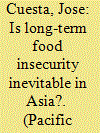|
|
|
Sort Order |
|
|
|
Items / Page
|
|
|
|
|
|
|
| Srl | Item |
| 1 |
ID:
117633


|
|
|
|
|
| Publication |
2012.
|
| Summary/Abstract |
The allegedly complex relationship between trust and victimization has rarely been modeled and, when done, the effect of trust on victimization has been found not statistically significant. This study finds otherwise, estimating an instrumental model with community data from Cali, Colombia. Cali's dismal levels of victimization were only second to Medellin, the most violent city of the world in the 1990s. But Cali also pioneered a strategy of social capital formation as the backbone of a deliberate public policy to crack down on high levels of crime. This article first develops a model of victimization that includes interpersonal trust as determinant and then instruments interpersonal trust with district-level average trust. We argue that an individual-specific level of trust in his or her community members does not affect the community level of interpersonal trust in the margin. However, the levels - or perceived levels - of interpersonal trust in the community may affect the specific level of trust of an individual in other members of that community, along with personal characteristics and experience. Using GMM estimates, this study finds evidence of a relationship between interpersonal trust and victimization, statistically significant and negative in sign. The result is robust across specifications of trust, victimization, and estimating techniques. We conclude that increasing trust in trusting communities contributes to reducing victimization in its own right, although the effect is modest. Consequently, strengthening interpersonal trust is another bullet to combat victimization but it is not a silver bullet.
|
|
|
|
|
|
|
|
|
|
|
|
|
|
|
|
| 2 |
ID:
135066


|
|
|
|
|
| Summary/Abstract |
This article questions two widely accepted claims on long-term food insecurity in Asia, the world's (heterogeneous) region with the largest number of undernourished individuals. The first claim is that food production may not grow as fast as the pace of population growth in Asia, which will reach 5 billion by 2050. The second claim is that an unstoppable emergence of a middle class in Asia will dramatically change the composition of food demand. On the first claim, the region's contribution to high and volatile international food prices is well known, but Asia's potentially positive contributions toward future price uncertainty and productivity growth are much less cited. On the second claim, the changing composition of future food demand in the region will depend on the extent that poverty reduction effectively leads to middle class expansion, which it is not an automatic process, and its extent still remains to be seen. Past evidence teaches us that poverty reduction on its own will not do the job of eradicating hunger, nor will only increasing food production. The jury is still out, but doomsday predictions are not necessarily justified.
|
|
|
|
|
|
|
|
|
|
|
|
|
|
|
|
|
|
|
|
|